82 F. high in the Twin Cities Sunday.
66 F. average high on September 28.
72 F. high on September 28, 2013.
September 28, 1876: Cold day over the region with a high of 45 in the Twin Cities (normally the high should be 65 there this time of year).

Best Investment
“Prefer knowledge to wealth, for the one is transitory, the other perpetual” said Socrates. He was right.
I can’t recall yesterday but I vividly remember a flight 30 years ago, sitting next to an investment banker. I asked the obvious inane question. “What’s the best investment?” He thought about it and surprised me with his answer. “Go back to school. Get an advanced degree. The extra money you earn during your career will far eclipse any returns from stocks, bonds or real estate.”
I’ve earned a crude MBA the hard way, by starting up 4 companies, but I wish I’d taken his advice. That said, there’s only so much you can learn from a book or lecture. Memorization only goes so far. Trial and error is a much better teacher.
The bubble has burst on our late September weather-honeymoon. Keep in mind the sun is as high in the sky as it was in mid-March, longer nights emboldening cooler fronts to probe farther south.
A family of fronts spark sprinkles today; heavier showers late Tuesday & Wednesday. We slide into a cooler, wetter pattern as we sail into October; jackets by late week, a risk of frost in the immediate metro Sunday morning.
It looks like 40s and low 50s for the Twin Cities Marathon.
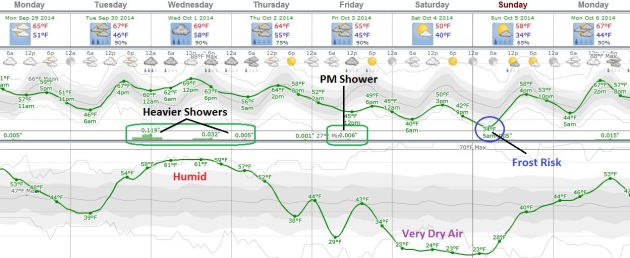
As Inevitable as Gravity. We knew 80s couldn’t spill on indefinitely, but it sure was nice while it lasted. Temperatures drop through the 60s today; 50-degree highs predicted by the end of the week with a slight frost risk by Sunday morning. The best chance of rain comes late Tuesday into Wednesday, a few PM showers possible Friday afternoon before drying out next weekend.
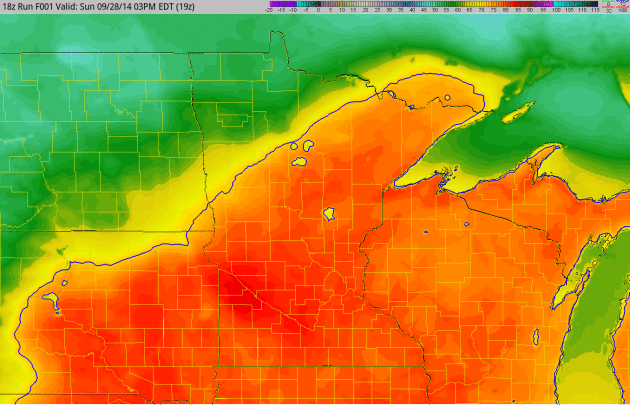
Temperature Correction. From July to October in the span of 36 hours? High-resolution NAM guidance from NOAA shows chilly air pushing south, sparking clouds and a few sprinkles today as temperatures fall through the 60s. 2-meter 60-hour temperature animation: HAMweather.

Canadian Infiltration. As jet stream winds buckle much colder air will plow southward; the main thrust of chilliness coming behind a sloppy frontal passage on Wednesday. Time to migrate from shorts back to jackets, but I still think we’ll see a few more 70s before the flakes start to fly.

60-Hour Accumulated Rainfall Potential. The approach of colder air sets off a smear of heavy rain over the Rockies; another bulls-eye of heavy rain from southern Georgia into the Florida Panhandle where 4-6″ rains may spark flash flooding. 4 KM NAM guidance: NOAA and HAMweather.
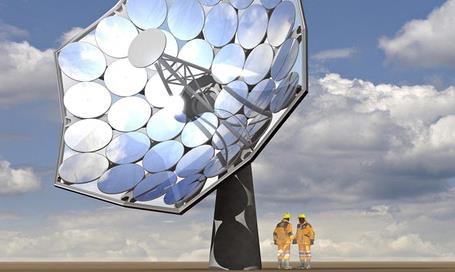
Solar Energy: A Sunflower Solution to Electricity Shortage. An IBM innovation that not only taps the free power of the sun, but also desalinates water for drinking and sanitation? The Guardian has details; here’s a clip: “Computer giant IBM last week revealed the prototype of its advanced solar electricity generators: a 30ft-high concrete “sunflower” fitted with wafer-thin aluminium mirrors and a maze of tiny tubes for carrying coolant through the heart of each device. The machines, which will be built in conjunction with the Swiss company Airlight Energy, can convert 80% of the sun’s radiation into electricity and hot water, it is claimed, with each generating 12 kilowatts of electricity and 20kW of heat on a sunny day, enough to supply several homes…”
Image credit above: ‘Game changer’: IBM and Airlight Energy’s 30ft concrete ‘sunflower’ was inspired by the branched blood supply of the human body.”
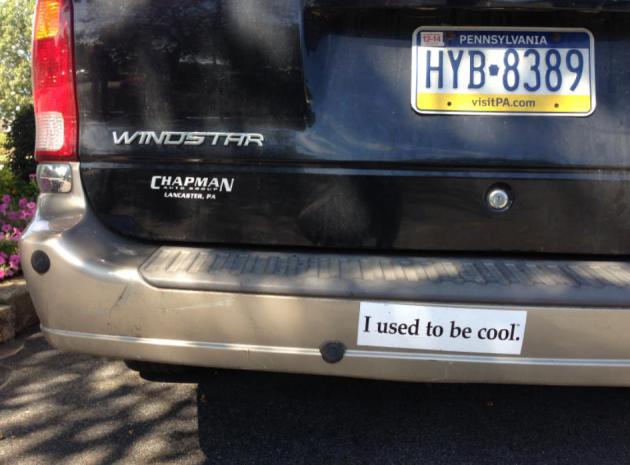


MONDAY: Mostly cloudy, cooler. Sprinkles. Winds: NE 10. High: 61
MONDAY NIGHT: Patchy clouds, chilly. Low: 48
TUESDAY: Fleeting sun. Late showers likely. High: 65
WEDNESDAY: Showers, stray T-storm or two. Wake-up: 59. High: 68
THURSDAY: Mostly cloudy, feels like October. Wake-up: 56. High: 64
FRIDAY: Gray and raw. Few PM showers. Wake-up: 45. High: 52
SATURDAY: Partly sunny and jacket-worthy. Wake-up: 40. High: 50
SUNDAY: Early frost? Clouds, stray sprinkle. Wake-up: 35. High: 57
Climate Stories…

Floods, Forest Fires, Expanding Deserts: The Future Has Arrived. We’ve gone from theory to reality, according to this article at The Guardian; here’s an excerpt: “…Perhaps most alarming of all the forecasts that concern the future warming of our planet is the work of Camilo Mora at the University of Hawaii. His research – which involved using a range of climate models to predict temperatures on a grid that covered the globe – suggests that by 2047 the planet’s climate systems will have changed to such an extent that the coldest years then will be warmer than even the hottest years that were experienced at any time in the 20th century. “Go back in your life to think about the hottest, most traumatic event you have experienced,” Mora said in an interview with the New York Times recently. “What we are saying is that very soon, that event is going to become the norm...”

How Melty Was The Arctic Sea Ice This Year? It looks like the 6th greatest loss of polar ice. Science writer Greg Laden puts things into perspective at scienceblogs.com: “…Looking at JUST surface area, which is one indicator of how warm the Arctic has become with Global Warming, we can see (above) that this years march of melting has been extreme, hugging the two standard deviation limit for all of the data from 1979 to 2010 (almost the present). Here you can see that 2014 is distinctly different, with much more surface area loss, than the first ten years of this data set, from here…”
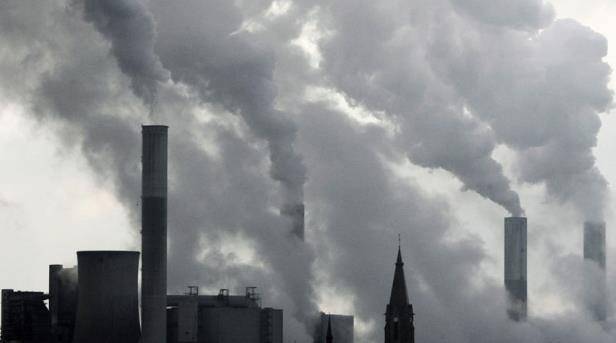
How Big Business Can Help Fight Climate Change. When going green puts more green back into consumer and company pockets – and we’re pretty much there, as Bob McDonald at CBC News explains; here’s an excerpt: “…For decades, the business community has known that going green usually makes money. It’s already been demonstrated at the simplest level, with examples such as hotels that have installed low-flush toilets and efficient shower heads, and then recouped those costs through savings in a very short time. The same is true for investments in better building design and more public transit. The changes were not just to save energy and reduce emissions; it was because it made good business sense…”

Climate Change Threat: As Global Leaders Stall, Cities Move To Cut Emissions, Boost Efficiency. Here’s the intro to a story at International Business Times: “In the face of global and federal paralysis on climate-change policy, local officials in the U.S. are already moving to cut their cities’ emissions and make their infrastructures less vulnerable to environmental threats. In Dubuque, Iowa, municipal leaders are rolling out data technology to help residents use less water and electricity. In Philadelphia, city experts are restoring watersheds and planting gardens to soak up the residue of heavier rains and rising sea levels, both effects related to global warming. However, few cities are doing more to confront climate change than New York, where Mayor Bill de Blasio appears keen to build on the environmental agenda of his predecessor, Michael R. Bloomberg…”

Climate Change Linked To Spread of Lyme Disease. Here’s an excerpt from EcoWatch: “As if we needed another reason to deplore the impacts of climate change, its warming effects are encouraging the northward spread of Lyme disease, carried by the black-legged tick which rides on deer, rodents and dogs, the Daily Climate reports. While common in the U.S., it was rare in Canada until recently. Because of that, Canadians eventually diagnosed with the disease were delayed in getting appropriate treatment…”
Image credit above: “The range of the black-legged tick, which carries Lyme disease, is expanding north due to the warming effects of climate change.” Photo credit: Shutterstock.

U.S. and Climate Change: Here Are The Top 10 Greenest Cities in America. No sign of Minneapolis, St. Paul, Rochester or Duluth yet, at least according to this analysis from International Business Times; here’s an excerpt: “… The number of so-called LEED-certified buildings (i.e., structures designed with minimal nonrenewable energy use and reduced water consumption) is also a good gauge of a city’s ecological consciousness. Cities with high proportions of green space also get two (green) thumbs up. Based on these and other criteria, below are the 10 greenest cities in the U.S., in no particular order:
1. San Francisco. The city’s curbside compost pickup program is just one of its many eco-friendly features. It was also the first U.S. city to ban plastic grocery bags.
2. Chicago. Chicago has more green roofs (i.e., roofs partially or completely covered in vegetation) than does any other city in the U.S. Green roofs help cut the amount of energy it takes to heat and cool a building, while also improving air quality…”

The Natural Gas Boom Could Accelerate Climate Change. That is, if methane leakage around wells isn’t adequately addressed in a rush for profits. Here’s a snippet that made me do a double-take from FiveThirtyEightScience: “…Policymakers have hailed this revolution as beneficial in the fight against climate change, but natural gas does have a dark side: It is composed primarily of methane, which has a much stronger climate-warming effect than carbon dioxide. Unburned methane that leaks into the air from anywhere in our natural gas infrastructure has a potent climate-warming effect, and global methane levels have been steadily increasing since 2007. The only way to know whether switching to natural gas will worsen climate warming, rather than lessen it, is to accurately assess the scale of methane leakage…”

10 Fact Checks About Climate Change. PolitiFact has the analysis – here’s an excerpt: “…U.S. Sen. Sheldon Whitehouse delivers regular Senate speeches about the dangers of climate change and authors commentary on the topic. In May, he argued that addressing climate change makes economic sense, adding, “There are already more American jobs in the solar industry than in coal mining.” PolitiFact Rhode Island found that the most recent data from three objective sources support his claim. We rated his statement True.”

Opinion: A $65 Trillion Global Warming Gamble in a $75 Trillion GDP World. Marketwatch has the Op-Ed; here’s a clip: “…One final observation on the world’s new love of free-market capitalism and its blind obsession with economic growth at all costs: BusinessWeek quoted David Owen from his “The Conundrum”: “As long as the West places high and unquestioning value on economic growth and consumer gratification — with China and the rest of the developing world right behind — we will continue to burn the fossil fuels whose emissions trap heat in the atmosphere.” Unable to stop. And eventually the addiction to ‘growth at all costs’ will itself destroy the planet’s collective conscience … because history keeps repeating… until there is nothing left to repeat.”

